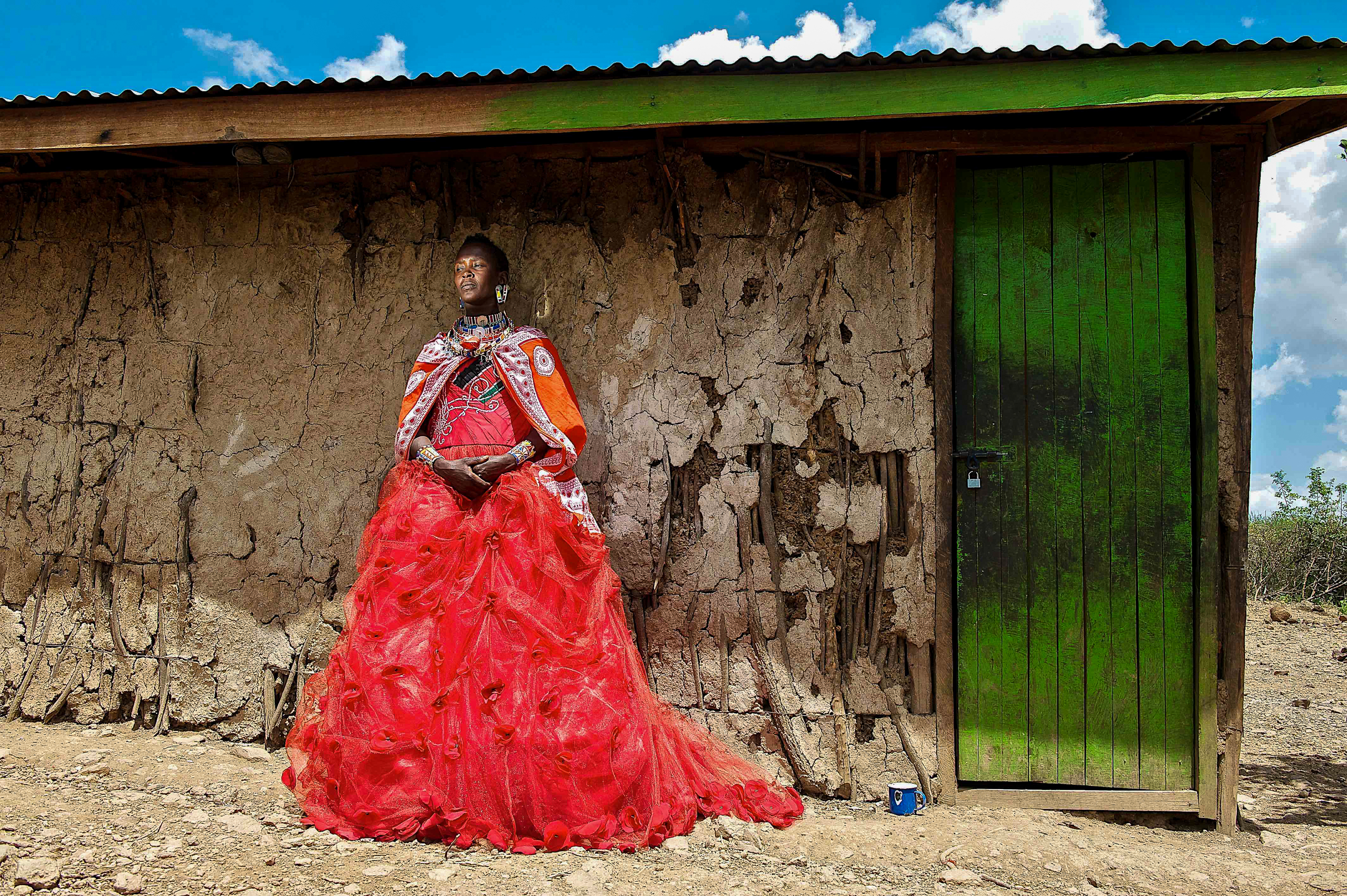“We are all born storytellers whether we actively recognize it or not,” says Kenyan photographer Barbara Minishi about the innate capabilities in us all. A regional Fujifilm Grant winner for her colorful environmental portrait series, she tells us why her camera is her most trusted companion.
We hate banner ads too. Download our app for iOS, iPad, and Android and get no banner ads for $24.99/year.
Early in her photography journey, Barbara’s struggles seemed to supply the platform to elevate her work to another level. An introvert by nature, she found comfort in the safe space her camera provided her as a young adult. What I found most inspiring in my interview with her is her open-minded outlook on the subjects she sees and the world around her. Despite being a professional photographer for almost 20 years, she still desires to learn new things. This approach won her a regional Fujifilm GFX Challenge Grant: an approach that all of us could adopt in our careers and daily lives. Learning should never stop, no matter how much of an expert we think we are. There’s always room for improvement and always a chance to create something we haven’t before.
The Essential Photo Gear Used by Barbara Minishi
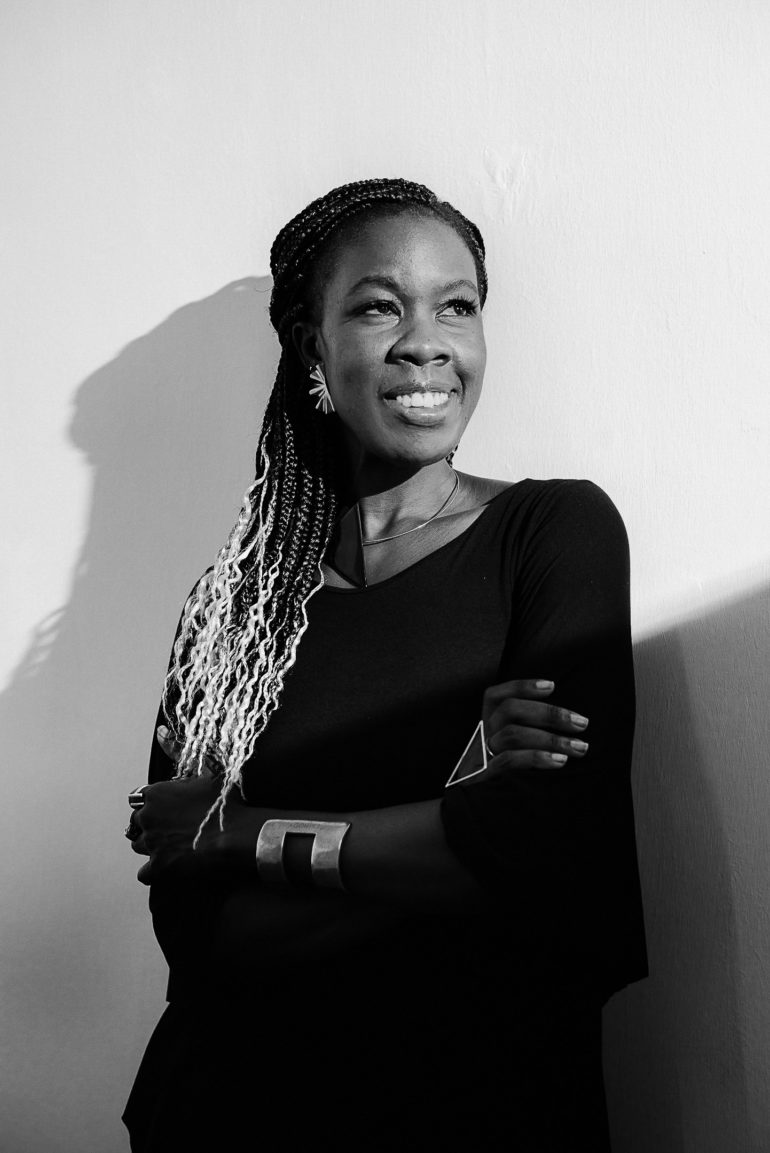
Barbara told us:
The Phoblographer: Congratulations on the Fujifilm GFX Regional Grant Award, Barbara. Tell us a bit about yourself and how you got into photography.
Barbara Minishi: Thank you. I’m delighted to receive the Fujifilm GFX Challenge grant as my first ever career grant, which is so refreshing. My ‘professional’ career began in 2003, and this year, 2022, is a creative homecoming into a deeper, expansive, more intentional cycle of connection, co-creation, and collaboration. The GFX100 has been on my dream gear wish list since 2020, and to get to utilize it to birth a heart project such as UTAWALA is deeply resonant. My photographic practice started as an organic, playful, exploratory, and experimental practice. As a teen, my father gave me his Minolta film camera to occasionally shoot with. I became the designated ‘photographer’ during family events and even documented my grandparents’ funerals in 1999, which was illuminating. Mostly introverted, observing people and my surroundings is my habitual nature, and the camera became a safe extension in which to be part of the world but still have a ‘boundary.’ When I went to university in 1999, My father encouraged me to go with the camera, and from day one of orientation, it became my best-trusted companion. As an awkward young woman navigating and finding her way in the world, the camera became my voice, playmate, and passport to learn and connect with people, places, and myself. The University library had a bunch of old donated LIFE magazines, and I recall a fascination with the Day in the Life photo stories. Eugene Smith’s photo essay, ‘Nurse Midwife’ of Maude E. Callen, was my most memorable essay and a turning point in how I viewed photo documentation. Something about that essay transcended time and space and inspired what I could do with what I had. In my 3rd year, the University put me forth for a one-week external Photo Documentary Workshop organized by the British Council that was led by the famous late photographer Tim Hetherington. I am forever grateful to Tim for opening my heart and mind to new possibilities regarding photography, and with his guidance, I initiated my first-ever documentary series on contemporary dance. Nonetheless, I still had not clued into photography being an actual career option. I just relished the freedom and empowerment the camera gifted me. I continued exploring and initiated my own “Day in the life” stories with a food hawker, a community medic, a tailor, and a shoe shiner, among others. I was buying expired Black & White 35MM Kodak TriX film and Ilford paper and would print them in a dark room of a commercial print shop called Studio Mona in Nairobi. (Thank you Sunil Parmar!) Despite all this, it was only after graduation that the aha moment of clear knowing clicked that photography was my path and not academia or corporate.
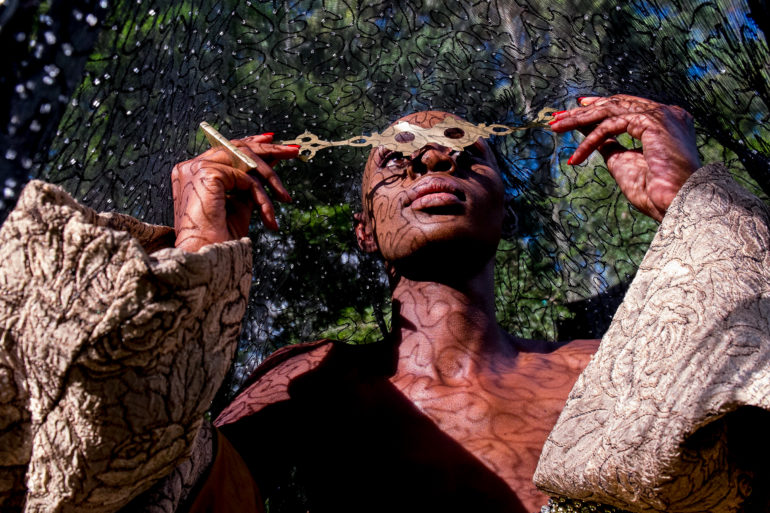
The Phoblographer: What camera gear do you use to bring your creative visions to life?
Barbara Minishi: The most important ‘gear’ I primarily use is myself. Your most important toolkit is YOU, your unique essence, your spirit, and the way you see and interact with the world. Your strongest lens is your heart. Yes, gear is important; nonetheless, ‘nice photos equals nice camera’ isn’t necessarily correct. When I began my professional career in 2003, I traditionally had a ‘small’ film camera and recall getting laughed at or dismissed because of the size of my equipment. Back then, I didn’t have the capital to invest big and relied on borrowing a friend’s Nikon Coolpix as I didn’t have a digital camera. It’s what I used for my first newspaper fashion editorial in 2004. In addition, one of my first magazine covers was shot with a borrowed point-and-shoot Samsung digital camera, and the set was created in my parents’ dining room. To date, a lot of people still don’t believe me. Yes, great gear can be an asset; nonetheless, what comes first is the person. I didn’t have the luxury of available money to cater to buying gear, so I worked with what I had or relied on the generosity of others.
The first professional camera I did buy for myself after a commission I received to curate a children’s photo exhibition at a hospital was a second-hand Mamiya RB67. It was a medium format film camera. My first ever DSLR camera purchase was a Nikon D40x in 2005 and then the Nikon D700 in 2008, which I’ve used consistently until February this year when she packed up. I got my Fujifilm X-E1 in 2011, and that’s been the best everyday travel and documentary companion. I really adore the X-System. Sometimes with a DSLR, people notice you, but I like how the deceptive compact size of X-System allows a photographer to‘ blend’ in as your gear is ‘unobtrusive.’ I also got my start shooting video because of the XE1. I truly enjoy the quality and versatility the X series offers. In 2020, I received the Fujifilm X-T2, and I continue to utilize both cameras.
As I write this, I just received the GFX100 that I will utilize for the next months, and I’m already in love! She’s a beauty and a beast! The quality is phenomenal, and I look forward to what I can create with her. Again, yes, gear matters nonetheless. Figure out what works for you first. I respond to newbies who ask for gear advice and share it’s best not to get in debt for the sake of getting the ‘best’ equipment. What really encompasses the ‘best’ gear? Brands are relative, work with who and what feels best for you and not what the advertising states. I truly value the tools we get to use nonetheless, no one camera or lens is the definitive holy grail of your career or ever-evolving vision. For DSLRs, I am truly amazed and thankful for how long my trusty D700 has aided me. In February, when I realized she was firmly ready for retirement, I gave thanks for the solid 12 years we cocreated together. I truly appreciate that now I can reconnect to medium format with the GFX system. Again, excellent gear is invaluable. Nonetheless, you, the person first, is what is important. Take care and nurture yourself and your vision as you grow in alignment with your practice. Again, if you can access high-end gear, do so; if some investments are beyond you, it’s okay to take your time and master what you have.
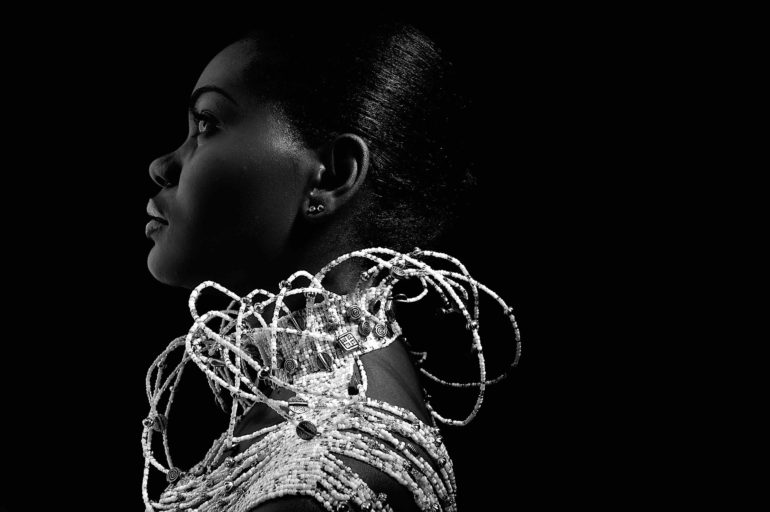
The Phoblographer: You’ve been interested in visual storytelling since you were a child. What were some of the memories you have of wanting to become a storyteller?
Barbara Minishi: As a child, I was obsessed with and still am with stories. I am a voracious reader and enjoy creating worlds in my mind. One Christmas, I received Mary Jane’s red patent shoes, and just like Dorothy, I went to bed wearing them because I wanted to go to Oz.
Growing up in the 80s and 90s, I also loved watching anything created by Jim Henson. I grew up on Fraggle Rock, and one of my earliest favorite movies was The Dark Crystal.
I would imagine building my own worlds and having adventures in them. I guess that’s why Dorothy and the Wizard of Oz have always been important. When I looked at all the movies that have stayed with me, I realized they all had a similar ideology, that the heroine’s journey is a deeper psyche cycle of transformation beyond the hero’s journey.
We all are on different cycles of our personal journeys. Who are you as the writer, director, protagonist, and production designer of your life story? The story makes us; the story is us. I never tried to ‘become’ a storyteller. We are all born storytellers, whether we actively recognize it or not.
The most important story is the story of your life. Who are you being here and now? What arcs have impacted your life? What hidden motives still exist within you?
It is said if you knew then what you know, or if you could go back in time, what would you advise yourself? The present ever-unfolding story of your life is cumulative of different people, places, choices chances, and the cosmic soup of life.
I speak also, recognizing that growing up, while there existed cultural folk tales I loved…there was and still is a plethora of tales whereas as a black woman, I didn’t see myself mirrored back.
I’m currently reading a book by Diana Adesola Mafe, ‘Where No Black Woman has Gone Before: Subversive Portrayals in Speculative Film and TV.,’ and it explores the representation of black women on screen with regard to sci-fantasy, etc. As a sci-fi and fantasy lover growing up, there weren’t many books with women of color in sci-fi beyond Octavia Butler and seeing black women in leading roles in these kinds of films was nonexistent. Most, if not all, were men going on exploration and adventure.
By my teens, I knew I needed to give myself my own permission to create stories I wanted to see. To be a conscious author of the narratives you ingest and those you embody, and the ones I create.
Lately, I celebrate how many more black women are writing speculative fiction and also being featured on screen. My other favorite authors include N.K. Jemison and Nnedi Okorafor.
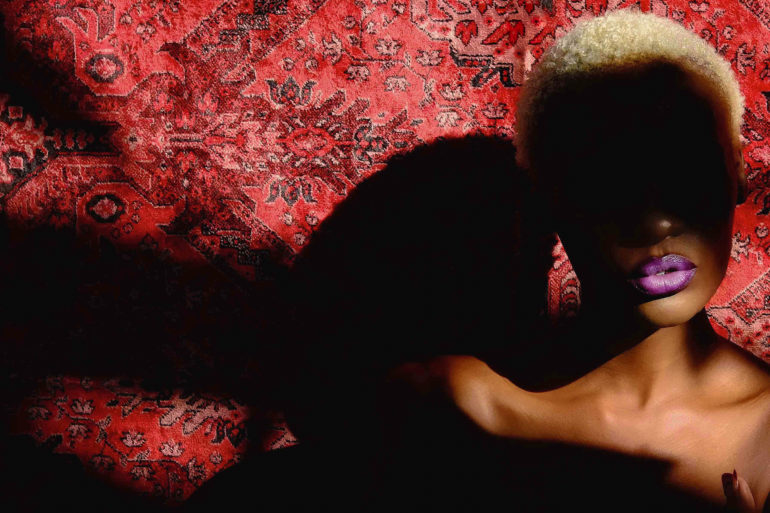
The Phoblographer: What is the Utawala project about? What does the word mean, especially in reference to the project itself?
Barbara Minishi: You know UTAWALA ceased to feel and be a project to me. It’s a cumulative manifestation of the values that inspire me. UTAWALA is a Swahili word that means ‘to reign’. UTAWALA is an environmental portrait series featuring different women wearing one ‘dress’, a symbolic connective container through which their life stories are celebrated. UTAWALA, meaning ‘to reign,’ explores each woman’s power, identity, and purpose within their domain of influence in society
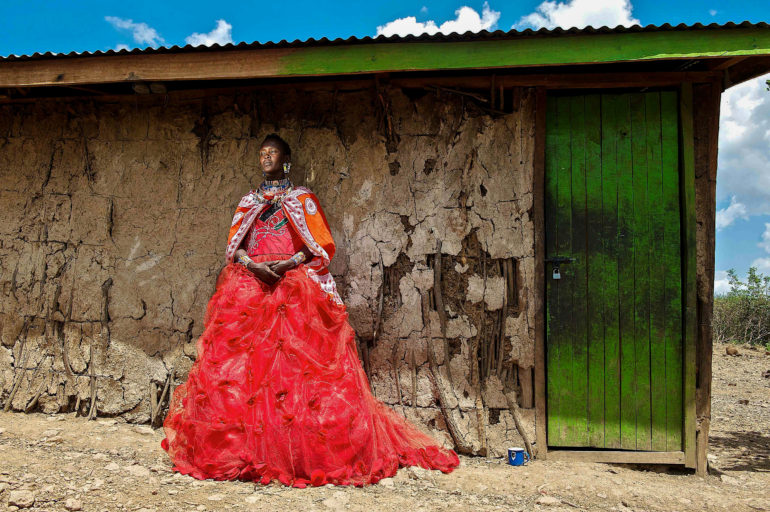
The Phoblographer: There’s a strong focus on color in Utawala, especially red. Describe the reason behind this, please.
Barbara Minishi: Red is powerful, dominant, and layered. To me, it represents life, joy, strength, courage, vibrance, and determination. It’s both an invitation and cautionary. Red is visibility and amplification and embodies the what of UTAWALA.
Growing up I sometimes felt invisible and I witnessed so much labor black women are expected to automatically shoulder in silence. Red isn’t a silent color at all! UTAWALA embodies themes of Representation, Visibility and Power and red was the color that resonated.
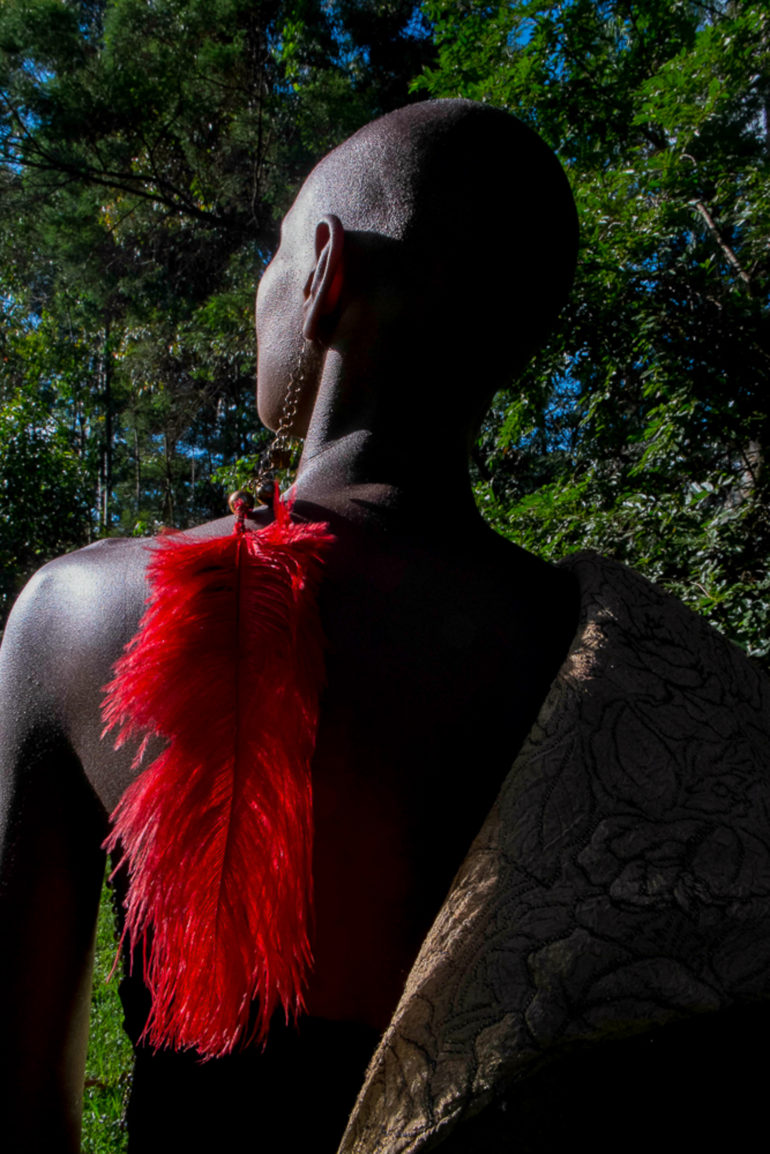
The Phoblographer: Choosing the final subjects for this project would have taken some whittling down. What factors were important in your final choices?
Barbara Minishi: When I pitched for the grant, I anticipated the global grant. The scope of the project needed to be adjusted in alignment with the resources, and the number is 10 now. Everyone is a potential subject nonetheless, the final subjects chosen to be featured are women creating a legacy. Not all have platforms that are already amplified, yet each is all at a different stage of life and is a presence of change that affects society on the micro.
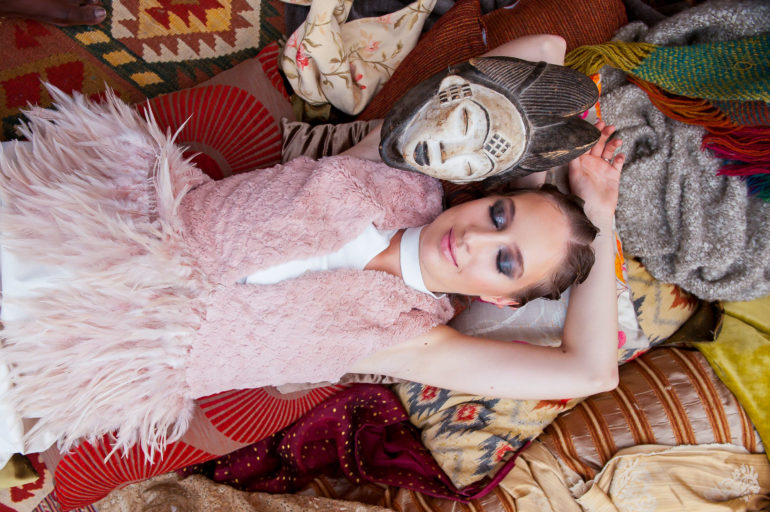
The Phoblographer: How long did it take to complete this project? What were the biggest hurdles you faced?
Barbara Minishi: Hmmm, the term complete doesn’t seem like the right one to describe the first phase of the red dress project.
Sometimes we also are invited to allow spaciousness with how projects will unfold. Yes, ideally, project management 101 demands time allotment nonetheless, I do recognize some projects will just not subscribe to that.
I had already started thinking about the project in 2010 before its active production in 2012. By early 2013 I knew it wasn’t feasible to continue due to funding, planning, and scope. In addition, Kenya was in the midst of elections preparation, and discernment regarding safe travel was mandatory. Unfortunately, too, projections regarding the color of the dress to political connotations happened. (The week I officially got on the road with the dress, a major political party initiated a powerful branding campaign, and yes, it was red.)
Stopping this project was the hardest thing I’ve ever done. I sat with the feelings of guilt, shame, and anger for many years about the coulda, shoulda wouldas.
Inadvertently, this project has been a pivotal point of self-reflection in how I now connect and collaborate. Addressing my hyper independence and fear of asking for help needed to pivot. I realized what initially made me successful as a photographer was also now what was hindering my progress.
I needed to get out of my own way and open, unlearn and redefine the ways in which I engaged with the world. To get deeper, you need to get vulnerable and unlock all ways your past trauma have conditioned you to be ‘strong’ and create boundaries or restriction instead of bridges of connection.
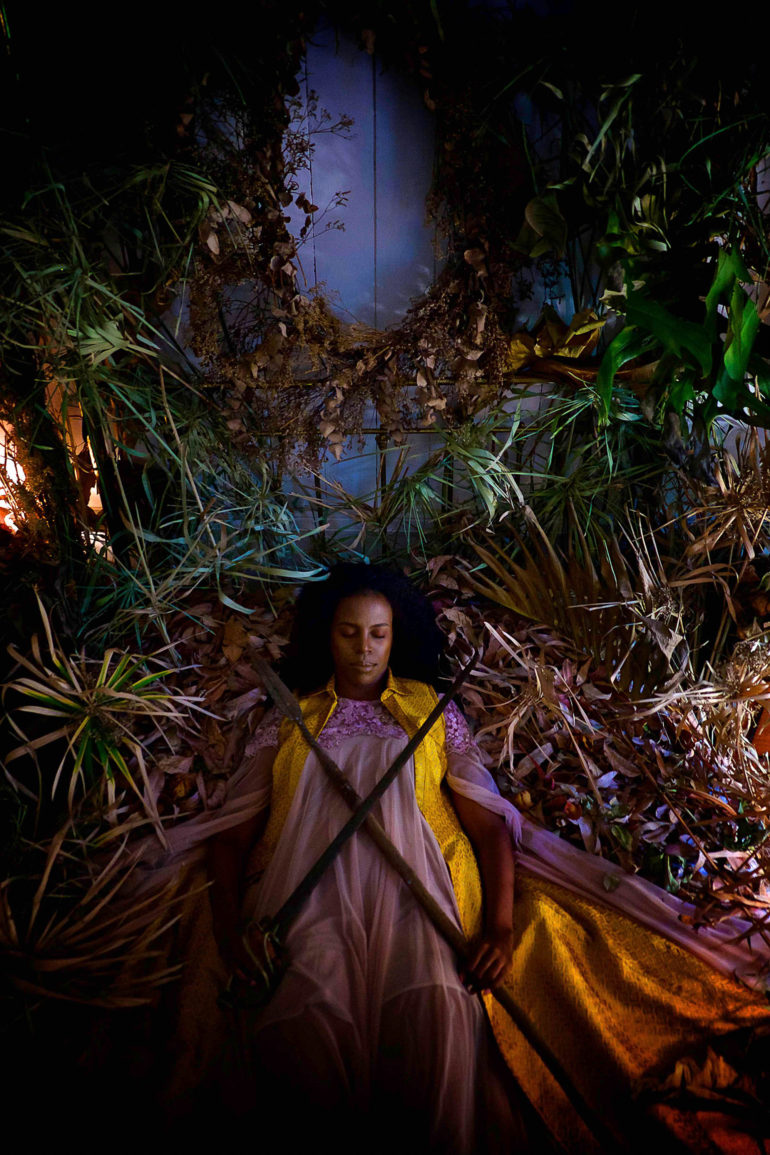
The Phoblographer: Seeing this project and your work reach a global audience, how does that make you feel?
Barbara Minishi: The work had in the past already reached a global audience, and that was nice.
Most importantly, the subjects featured too reached new audiences, for example, Lilly Oyare’s Little Rock Early Education School which is now so different from what it was in 2012.
Yes absolutely. It is incredibly affirming when one’s work reaches a global audience! I recognize the responsibility of being a black woman creator. I deeply honor, enjoy, and show up with pride to showcase black women.
Having said that, can you do the work on your own without recognition? Can you move through your creative journey without external success and validation? Barely receiving consistently paid commissions was an incredibly challenging and deeply vulnerable period in 2016. I still continued to create stories as a process of self-therapy, connection to peace, and affirmation that I was showing up to life. I offered my services for free for causes that resonated and attempted to create marketing strategies to invite portrait commissions. I was barely surviving. Nonetheless, photography still kept me showing up for life.
Within this period, I was creating a body now called The 13th Path. The 13th Path is a series of fine art photography, paintings, video, and collage that embodies being in conversation with self, life, and art while in a liminal space. 13 is a number that is both worshipped and feared. It is the number of mysteries, the feminine, the spiral step into the unknown. In Tarot 13 is Death; it symbolizes life cycles of transformation and rebirth.
The Red Dress project clarified for me what happens when you let go of a project and allow a part of yourself to ‘die.’ Photography has been with me before and after commercial ‘success.’ It’s been the solid companion that jump-starts my heart and moves me into a deeper relationship with the world. It invites me to pay attention to the now and get intimate, aware, and honest with everything. With or without recognition, I still get to show up and be and do what lights and grounds me.
Success now, for me, is liking who I am as a human in the ecosystem of life. I value myself. I honor this talent and will continue to nurture my skills, but it doesn’t define my identity. You and I are already inherently worthy without it being tied to what we produce or who bestows on us recognition. The world will always have its opinions and tastes, and releasing oneself from being controlled to that as a measurement of your value and contribution matters.
Photography teaches me to let go. I’m a much better listener now. Yes, belonging and a supportive community are truly deeply important. We are interdependent and can do so much together when we recognize, nurture and nourish our various macro and micro-ecosystems. There are many photographers of colour from marginalized communities with stories that demand inclusion and amplification. With and beyond social justice, holistic health, climate, technology, and economics, they’re other stories of cultural beauty and the human spirit we can celebrate. Recognition is definitely important, and global applause may connect you to new partnerships and collaborations, which I fully welcome.
Again, I’m truly appreciative of the recognition, which also includes a feature by PhMuseum as one of the black women photographers to follow in 2022. That is embodied responsibility that ‘started’ in 2003 and extends beyond 2022.
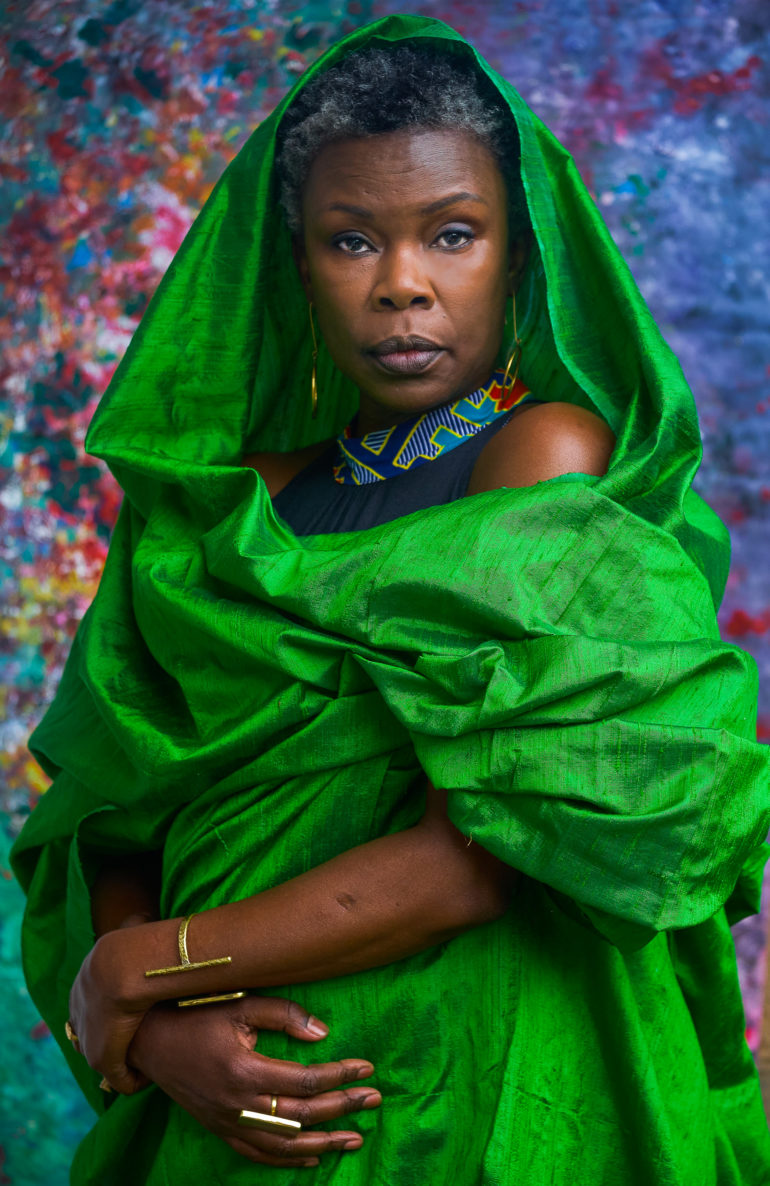
The Phoblographer: How has the project been received in Africa and in Kenya? What is being said about it?
Barbara Minishi: The project was positively received in its first iteration. Al Jazeera followed the documentary when I first started the project in late 2012. It was first aired in 2013 and was in successful distribution for a number of years. I had strangers reaching out, saying they watched it on the flight and were inspired by it. I acknowledge the commendable Impact it actualized; nonetheless it clearly revealed to me a difficult pivot I needed to make. No matter how great it was, it wasn’t working out.
As a self-funded project, I underestimated the production depth, financial resources, and administrative support required. Stopping the project was a difficult yet necessary choice. I was in grief for a long time, and the guilt and shame weighed on me. It’s true when they say; ‘unmet expectations can breed depression.’ Nonetheless, I acknowledged a powerful seed had been planted. I chose to take what I learned from that seed and plant it elsewhere. Truly, failure is such a generous fertilizer for creative breakthroughs and evolution.
In October 2021, I had a sudden deep urge to remove the dress from storage and air it. A month later, while in the midst of a VR Filmmaking Masterclass, which required a story pitch to execute, the dress said; Hello, it’s me again. The story pitch was chosen, and in December 2021, I wrote and directed an immersive 360 VR experience in which the dress got to visit one of the women she wore back in 2012. The VR film process not only allowed the dress’ original journey to end, but it further transmuted it into UTAWALA.
UTAWALA is a second first chance. It’s both an ending and beginning and speaks to legacy and reflects how our journeys are never linear. What cycles within your own life come round again and ask to be tended to? This project continues to be a self-illuminative practice on patience, resilience, and on rewriting our narratives on the creative process, especially regarding failure. Often we can get caught up in what we want stories to be, and sometimes the story demands a different timing, context, and different you.
UTAWALA is an additional important internal and external cyclical mirror to me of what’s possible when we allow ourselves and our projects to compost, allow complexities, and implement disciplined detachment. It embodies what is possible when you’re willing to let go, surrender to the unlearning, and if invited again, being willing to show up in service to the larger calling.
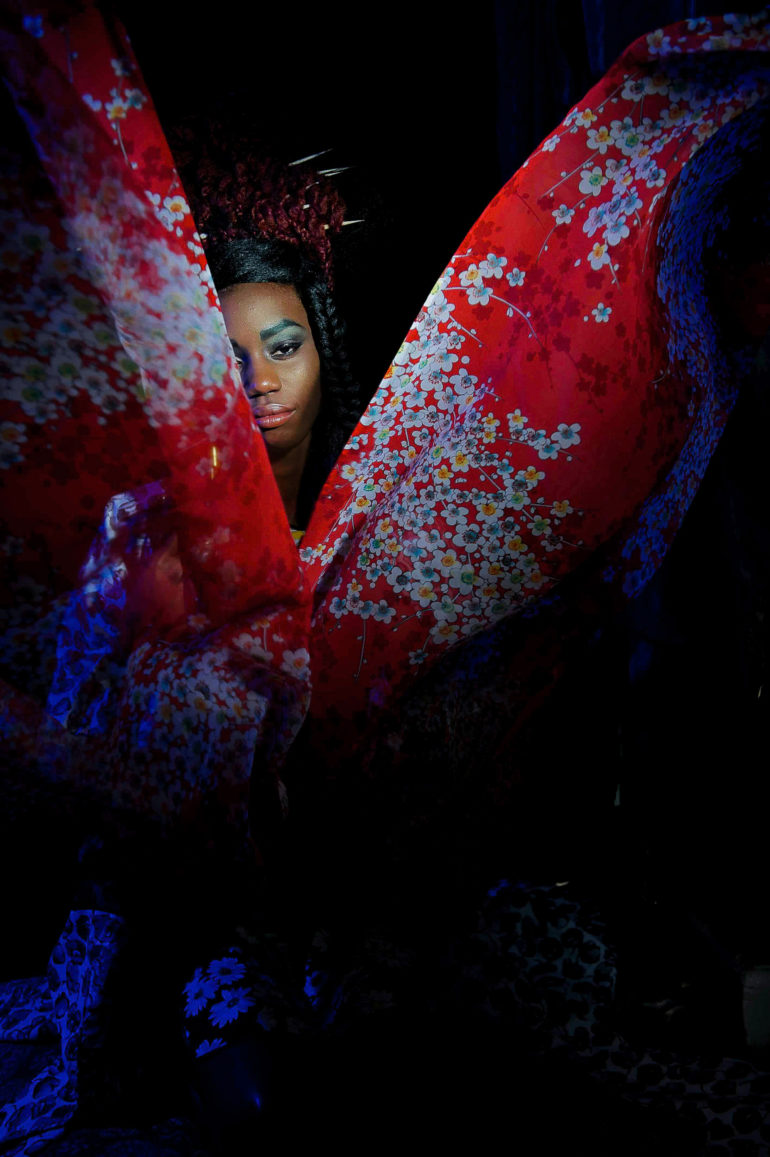
The Phoblographer: After so many years as a professional photographer, do you feel the creative voices of African artists and people of color needs to be amplified?
Barbara Minishi: Absolutely! There are so many excellent creatives doing incredible work and available to connect and expand. To reiterate, I’m receiving my first ever photography grant after 18 years of working, and no, I still feel fresh and open to possibilities.
I recognize and applaud that the more Africans are now collecting and supporting their own artists nonetheless. As a self-employed photographer, it’s still difficult, and I’m yet at a level where I can confidently say I’m thriving and not worried about living costs. To value your craft is also to navigate creating under containment yet embodying the integrity of your vision and being non compromising on quality.
So yes and yes and yes, more than ever, let’s amplify underrepresented artists and invest and support each other. Commission that photographer; gift someone a portrait session, buy images that nudge and share online and in your circle artists whose work you adore. Refer photographers to new clients. If you have a store/café where it’s a win-win solution to provide gallery space so they can exhibit and sell their work is nice–so much is possible. As a photographer how can you also invest in another photographer and co-create a system of equity in which we all prosper?
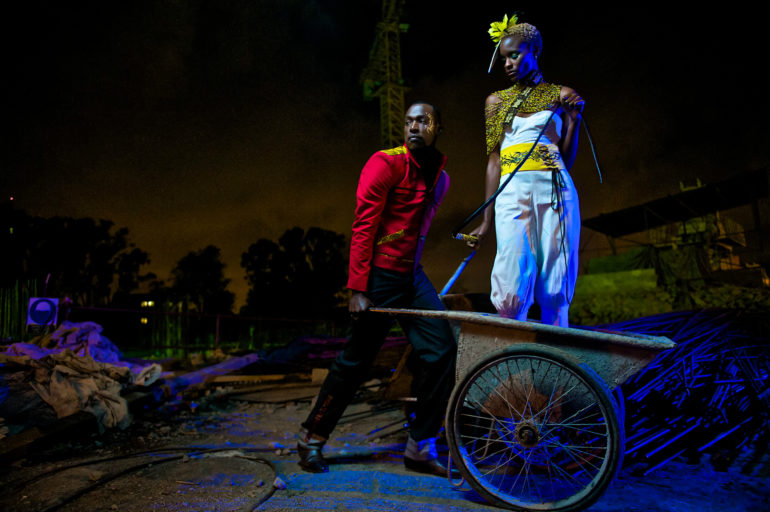
The Phoblographer: Art can provide a wonderful outlet for the underrepresented to express hope. What needs to be done to grant widespread access to the creatives of tomorrow?
Barbara Minishi: I can only reference Kenya in this particular context as unfortunately, Arts as a subject was discontinued in primary and high school. It truly needs to be reintroduced into the education curriculum. I’m not insinuating that school is the only place to develop as an artist. Nonetheless, if the basic education system does not nurture it as a necessity, it handicaps the cultural exploration and progression and heritage of a community.
I credit the benefits of creative practice with influencing my critical thinking, problem-solving skills, mental well-being, and spiritual fulfillment. Art is an important outlet, and access has to inadvertently start inward with oneself. You can’t wait for the perfect conditions, equipment, investment, etc. Start with what you have. Commit to the process. Be the practice and do it over and again.
I do not support struggle culture or the starving artist archetype and recognize how hyper independence and not asking for help almost killed me. Cultivating community is vital for long-term growth and understanding the nuance of pace, compatibility, conflict, and cycles is key.
Representation matters. Access matters. Support systems matter. Investments matter. Self Responsibility, Consistency, doing the work, and caretaking for your health matters.
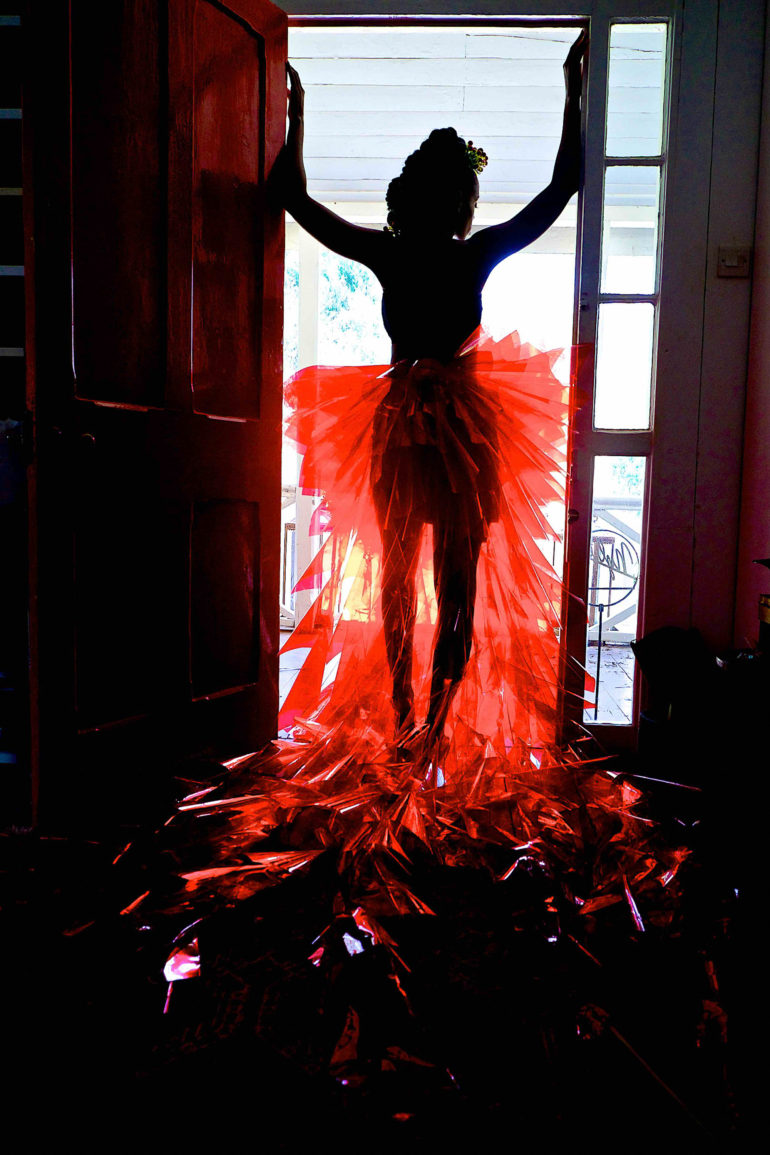
The Phoblographer: What sort of legacy would you like to leave behind with your work?
Barbara Minishi: I love seeing more female Kenyan and African photographers doing impactful work in the region and internationally. I’m proud to be part of platforms that push for this, such as Black Women Photographers, The Luupe, and Diversify.
As a person who was once told ‘You’re black and female and will never be a professional photographer in this country…” it truly is a testament that anything and everything is possible. And while I do mention females, I’m also cognizant and firmly support that legacy includes every gender. Every day if you’re intentional with what you follow or subscribe to on social media, you can be introduced to diverse visual storytellers.
I continue to listen, learn, teach, share and grow. In 2004 I seeded a dream for a community called H.I.V.E (Hub of Images and Visual Education, Exploration and Expression) to embody this, and in 2019 began to talk to others about the possibility of actualizing it. Together with others, I look forward to the actualizing of a community and space dedicated to Photographic Arts.
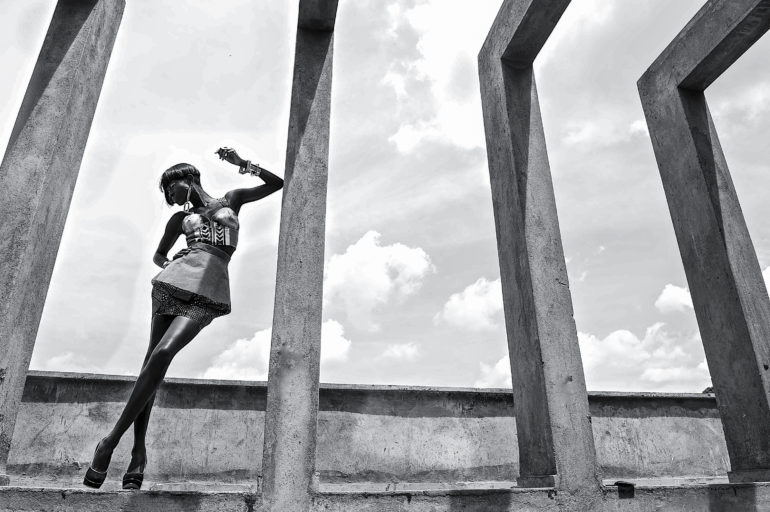
All images by Barbara Minishi. Used with permission. Check out her website, Instagram, and Twitter pages to see more of her work.


